Coaxial Cable Guide: Types, Applications, and Buying Tips
What is Coaxial Cable?
Coaxial cables are a type of electrical transmission line, designed to carry high radio frequency (RF) signals from one device to another with low loss. They are available in different lengths and sizes to suit various applications. Keep reading to learn all there is to know about coaxial cables.
We fix poor cell phone signal! Find the right signal booster for you:




In this Guide:
- How Does a Coaxial Cable Work and What Does it Look Like?
- What is Coaxial Cable Used For?
- What Are the Different Types of Coaxial Cables?
- Things to Consider Before Buying a Coaxial Cable
- Best Coaxial Cables
- FAQs
How Does a Coaxial Cable Work, and What Does it Look Like??
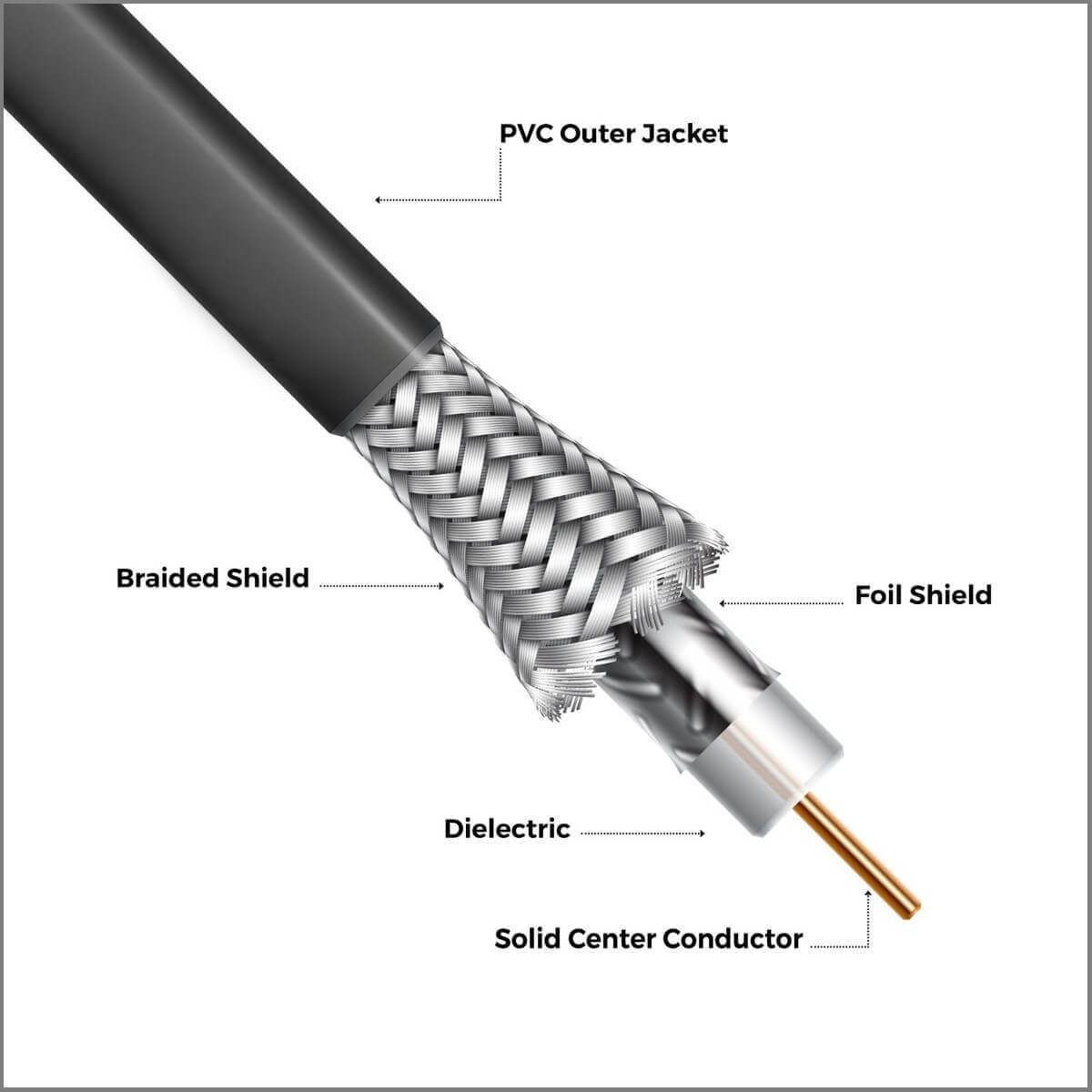
Coaxial cables transmit signals through a central conductor, surrounded by a metal shield to preserve signal quality. Both carry a current, creating a magnetic field that keeps the signal intact and prevents it from leaking. The shield also blocks electromagnetic interference, allowing coax cables to run near other electronics without issue. A dielectric insulator maintains a consistent gap between the core and shield, preventing signal loss or cancellation. Everything is wrapped in a protective outer jacket.
A coaxial cable has four main parts:
- Center Conductor/Core: A copper or copper-coated steel wire carrying RF signals.
- Dielectric Insulator: Keeps the core and shield separated, often made of plastic.
- Braided Shield: Woven metal layer blocking external interference. Some cables use multiple shields for extra protection.
- Outer Jacket: The tough outer layer that protects internal components and indicates where the cable can be installed.
What is Coaxial Cable Used For?
Coax cable is necessary for any application requiring radio frequency transitions, such as:
Delivers video and data from the cable provider to your TV or antenna.
Connects the outdoor antenna, amplifier, and indoor antenna to bypass signal-blocking material and improve cell signal indoors and in vehicles.
Carries internet signals from your service provider to your modem/router for wired or WiFi access.
Links antennas to radios for clear, long-distance communication without internet or cell networks.
Transfers RF signals in various devices and applications.
What Are the Different Types of Coaxial Cables?

There are two main types of coaxial cables: RG and LMR®. The best choice depends on your specific use case, whether it’s for TV, internet, antennas, or wireless systems. Here’s a quick breakdown of the most common options in each category:
RG Coax Cables
RG Cables are the classic, widely used types originally designed for military use. The “RG” number loosely refers to the cable’s size and performance.
The most common 75 Ohm cable. Perfect for cable TV, internet, and everyday home setups.
A 50 Ohm cable used in audio control rooms, radio stations, and for connecting outdoor antennas, though it’s not ideal for pure video signals.
A thicker 75 Ohm cable designed for HDTV, CATV, and long cable runs where lower signal loss is important.
A thinner, flexible 75 Ohm option used for CCTV systems, video connections, and other short-distance, low-frequency applications.
LMR® Coax Cable
LMR® Coax Cables are a newer, more flexible type of RF cable known for low signal loss and easier installation, especially outdoors.
A 50 Ohm cable often used for short outdoor antenna runs.
Slightly thicker than LMR®200 cable and ideal for connecting GPS, WiFi, and mobile antennas
A versatile, flexible 50 Ohm cable designed for wireless systems and antenna feeder runs — a modern replacement for older RG-8 cables.
A heavier-duty 50 Ohm option, also known as "Half-Inch", made for rugged, outdoor and indoor applications where bending and handling flexibility is important.
For larger systems, LMR®900, 1200, and 1700 are even thicker, heavy-duty, low-loss cables made for medium-to-large antenna setups where durability and consistent performance matter.
Things to Consider Before Buying a Coaxial Cable

Cable Length and Thickness
Coaxial cable comes in varying lengths and thicknesses. These characteristics affect the strength of the signal transmitted.
The longer a coax cable is, the more signal it loses along the way. Thicker cables help reduce that loss but aren’t as flexible, so it’s best to choose the shortest and thickest cable that fits your setup.
Impedance (Ohms)
Coax cables come in two main impedance ratings: 50 Ohm and 75 Ohm. 50 Ohm cables are the preferred choice for things like radio systems, commercial boosters, antennas, and other high-power handling applications. Offering higher flexibility, 75 Ohm cables are mostly used for residential applications like TVs, internet, and home cell signal boosters. Stick with the same impedance throughout your system to avoid extra signal loss.
PIM (Passive Intermodulation)
When metal parts in a cable system connect, they can cause distortion, especially at higher signal levels. This is called PIM and mostly affects cellular systems. To prevent it, use low-PIM cables and connectors when possible.
Cable Jacket Rating
The outer jacket of a coax cable determines where it can be safely installed:
- Communications Multipurpose Plenum (CMP) Cable: Safe for air ducts and ceilings. Fire-resistant and low-smoke. See our guide on Plenum vs. Non-Plenum Coax Cables for more information.
- Communications Multipurpose Riser (CMR) Cable: Good for running between floors. Fire-resistant, but not for air spaces.
- Communications Multipurpose (CM) Cable: Standard use in homes and offices. Not recommended for risers or air ducts.
Connector Types

Coaxial connectors are found on each end of the cable. They are designed to maintain the integrity of the cable as it transmits signal. The type of connector you need depends on your equipment. Common types include:
50 Ohm screw-on connector for radios and antennas.
Smalle than SMA with a snap-on design. Used for antennas, GPS, and computer systems. Available in 50 and 75 Ohms.
Most common. Usually found on RG-6/U cables. Used with cable television, satellite television, and cable modems.
Larger connectors used for commercial setups.
50 Ohm miniature connector for mobile and cellular equipment.
Weatherproof connectors commonly used with mobile phones and RF/antenna connections.
50 Ohm connector widely used in amateur radio, citizens' band radio, and marine VHF radio.
Connectors come in male and female versions, with either standard or reverse polarity. Make sure to match your equipment’s connection type to avoid needing adapters, which can cause extra signal loss.
Best Coaxial Cables
RG-6 Cables with F-Type Connectors
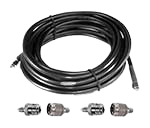
Great for home cable/satellite TV and weBoost boosters. Flexible and easy to install, available in 2 to 50 feet, black or white.
Starting at $4.99RG-11 Cable with F-Type Connectors
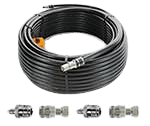
Lower signal loss than RG-6, making it better for longer cable runs. Available in 2, 50, 75, 100, and 500-foot options.
Starting at $22.959LMR®400 Equivalent Cables with N-Type Connectors
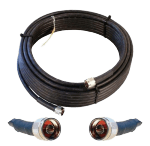
Ideal for large installations. Available in 2 to 1000-foot spooled lengths.
Starting at $24.99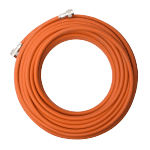
LMR®600 Equivalent and LDF4/AI4 RPV-50 “Half-Inch” with N-Type Connector
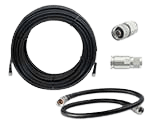
Best for long runs over 150 feet. Thicker and more durable for industrial setups. LDF4 has a foam interior, while AI4 RPV-50 doesn’t — but performance is similar.
Contact UsRG-58 and RG-174 Cables with SMA Connectors
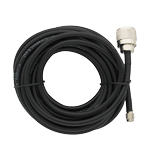
Lower-loss cable for vehicle applications. Available up to 20 feet.
Starting at $14.99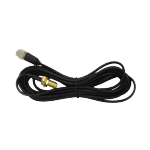
Thinner option, typically used in RVs or boats. Comes in a 6-foot length.
Buy Now at $9.95FAQ
What Are the Advantages and Disadvantages of Coaxial Cable?
Like all electrical equipment, coaxial cable has its advantages and disadvantages.
Advantages:
- Durable
- Good electromagnetic interference resistance
- Affordable
- Easy to customize and expand
- Easy to wire and install
Disadvantages:
- Bulky and an eyesore if not hidden
- Installation can be expensive
- Cable failure can cause your entire network to go down
- Fragile
Are All Coax Cables the Same?
While all coaxial cables are used to transmit signals, they are not all the same. Coaxial cables vary in size, material, and shielding, with each type working best for specific applications. Reference types of coaxial cables for more information.
How Do I Choose Coaxial Cable?
Start by knowing what device you’re connecting, as cell boosters, satellite dishes, and TVs may need different cables. Also, consider where it’ll be installed, since indoor and outdoor cables have different ratings.
Pick a cable with the right impedance (50 or 75 Ohm), connector type, and jacket rating for your setup. Measure the distance between your devices. Shorter, thicker cables reduce signal loss.
For best results, match the cable’s impedance to your equipment and keep cable runs as short as possible. If needed, you can use online calculators to estimate signal loss over distance.
Does the Length of Coaxial Cable Affect Signal Quality?
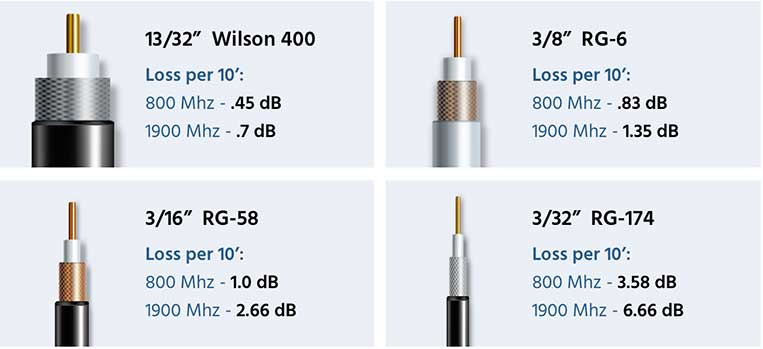
Yes. Signal experiences more attenuation over longer cables. Thus, for best performance, coaxial cables should be as long as you need them to be. No more, no less.
The Wilson400 cable, for instance, has a signal loss of just 0.45 dB per 10 feet on the 800 MHz band. Signal gain and loss are measured in decibels (dB), which follow an exponential scale. Signal strength reduces by half every -3dB.
You can use an online calculator to estimate signal loss, like the QSL Loss Calculator, though we don’t endorse this one specifically.
What is the Transmission Speed of Coaxial Cable?
The speed at which coaxial cables transmit data depends on the type of cable and the technology that gives it its speed. For example, your internet service provider, cable company, and the like. Coaxial cable transmission speed can range from 10 Mbps to upwards of 100 Mbps.
How Does Coaxial Cable Compare to Ethernet Cable?
Ethernet cables have a twisted-pair wire construction, delivering higher speeds and better performance than coax. They are mostly used to connect devices in a local area network. On the other hand, coaxial cables are designed with a single copper core surrounded by insulation and shielding. They are commonly used for transmitting TV signals, internet from cable providers, and other long-distance communication applications.
While Ethernet cables are superior for high-speed networking, coaxial cables remain a reliable option for applications that require robust signal transmission over longer distances.
What's the Difference Between Coax Cable and Fiber Optic Cable?
Coax cables and fiber optic cables are both used for transmitting data, but they work differently. Coax cables use copper to send electrical signals, making them great for TV, internet, and cell phone boosters. Fiber optic cables, on the other hand, use light to transfer data. This allows significantly faster speeds and longer runs. In short, coax is good for basic needs, while fiber is better for high-speed, long-range connections.
Does Coax Cable Go Bad?
A coaxial cable can last for many years, but it can go bad. The main culprits are:
- Heat damage – When exposed to high temperatures for a prolonged amount of time, the plastic wrap can melt. Unprotected, inner components will get damaged.
- Physical damage – Bending coax cable or stepping on it can damage the inner components, affecting transmission.
- Water damage – Water inside the cable can affect electrical components. Depending on severity, it can degrade performance or render the cable useless.
- Connector damage – If a connector comes loose, rusts, or breaks, the cable can't efficiently transmit information from one source to another or at all.
Increasing the longevity of your coaxial cable starts with choosing a high-quality cable. Proper installation is key—ensure connectors are securely weatherproofed, and avoid bending the cable to prevent damage.
Can I Install Coaxial Cable Outdoors?
Outdoor coax cables require extra insulation to protect the wires from the elements. Cables rated for outdoor use can be installed along the exterior of your home or buried underground. To ensure reliable performance, they must be durable enough to handle sun exposure, moisture, and other environmental factors.
Our coaxial cables are outdoor-rated, but not direct burial-rated
Does It Matter What Coaxial Cable I Use?
Yes. A signal booster might need a different cable than a radio system. For best results, it’s important to use a cable that's appropriate for your application.
Contact Us!
Wilson Amplifiers is a leading provider of cellular boosters and accessories, including coaxial cables. If you’re looking for high-quality coax cable to stay connected, we can help you! Give us a call at 1-800-568-2723 and we’ll help you find the right one.
LMR® is registered trademark of Times Microsystems.
Coaxial Cable Sources
Interested in Learning More? Check Out Our Signal Boosting Info Center


Money Back Guarantee

Technical Support